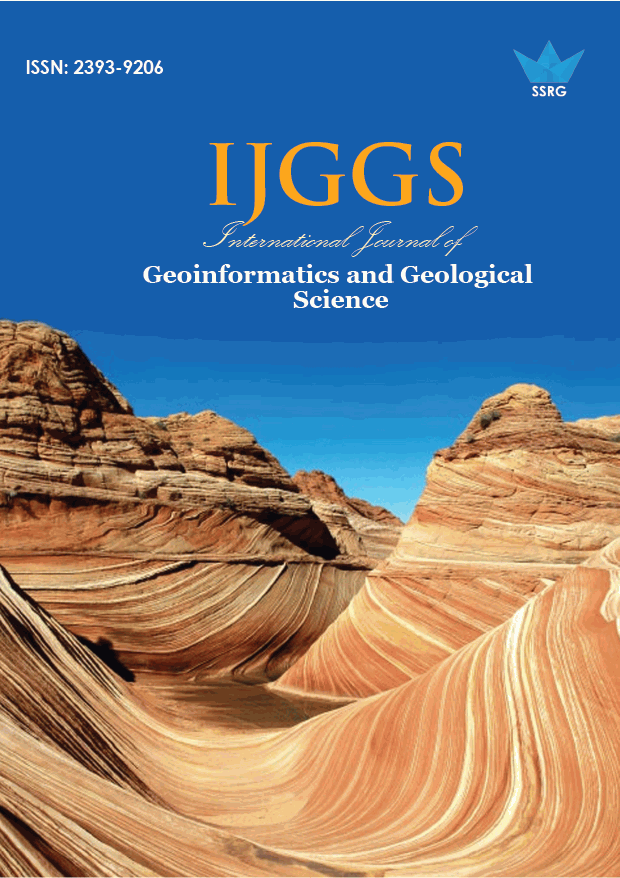Implementation of Novel Routing Algorithm for Updating the Road Network Data Instantaneously

| International Journal of Geoinformatics and Geological Science |
| © 2014 by SSRG - IJGGS Journal |
| Volume 1 Issue 1 |
| Year of Publication : 2014 |
| Authors : R.Aaditya mehra, Dr.G.Charan yadav |
How to Cite?
R.Aaditya mehra, Dr.G.Charan yadav, "Implementation of Novel Routing Algorithm for Updating the Road Network Data Instantaneously," SSRG International Journal of Geoinformatics and Geological Science, vol. 1, no. 1, pp. 10-13, 2014. Crossref, https://doi.org/10.14445/23939206/IJGGS-V1I1P104
Abstract:
The objective of this paper is to improving the routing speed and identifying the shortest path to updating the road network information more frequently. This system provides a smooth transmission of data between the client and server by allowing the clients to query through the shortest path. The client can query to the server to get information about shortest path on the road and travel time of the path. There is lot of dynamic routing algorithms and mechanisms are available but this paper proposes the dynamic routing algorithm. This algorithm is well suited for updating the road network.
Keywords:
routing, distance vector routing algorithm, road network, router configuration
References:
[1] Astarita, V., Bertini, R. L., d'Elia, S., Guido, G., Motorway traffic parameter estimation from mobile phone counts, European Journal of Operational Research, Vol.175, pp.1435-1446, 2006.
[2] Bar-Gera, H., Evaluation of a cellular phone-based system for measurements of traffic speeds and travel times: A case study from Israel, Transportation Research Part C, Vol.15, pp.380-391, 2007.
[3] Bennett, C.R., Chamorro, A., Chen C., de Solminihac, H., Flintsch, G.W., Data Collection Technologies for Road Management, Version 1.0, East Asia Pacific Transport Unit, The World Bank, Washington, D.C., April 2005.
[4] Bishop, R., Arizona I-19 Wi-Fi Corridor: Assessment of Opportunities for Probe Data Operations, Report TRQS-02, prepared for the Arizona Department of Transportation, 2005.
[5] Ehlert, A., Bell, M.G.H., Grosso, S., The optimisation of traffic count locations in road networks, Transportation Research Part B, Vol. 40 , pp. 460–479, 2006.
[6] Bettstetter, et al.: GSM Phase 2+, General Packet Radio Service GPRS: Architecture, Protocols, and Air Interface, IEEE Communications Surveys, Third Quarter 1999, Vol. 2, No. 3.
[7] Boudet, L., Midenet, S.: A Spatiotemporal Data Fusion Model for Occupancy State Estimation: An Evidential Approach. Presented at FUSION 2008, the 11th International Conference on Information Fusion, Cologne, Germany, 30 June - 3 July 2008.
[8] Browne, R., Foo, S., Huynh, S., Abdulhai, B., & Hall, F.: Comparison and analysis tool for automatic incident detection. Freeway operations, high-occupancy vehicle systems traffic signal systems, and regional transportation systems management Transportation Research Record, 2005, 1925, pp. 58–65.
[9] Capello, D., Liotti, L., Pallaro, N.: Sensore automotive per il rilievo dello stato strada. Published at Innovazione e Competitività (FIAT internal journal), July 2008.
[10] Dempster, A.P.: The Dempster–Shafer calculus for statisticians, International Journal of Approximate Reasoning, Volume 48, Issue 2, June 2008, pp. 365-377.

 10.14445/23939206/IJGGS-V1I1P104
10.14445/23939206/IJGGS-V1I1P104